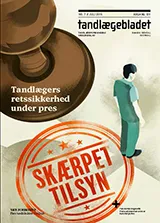Burkitt Lymphoma
Background – Burkitt Lymphoma (BL) is a high-grade, B-cell, non- Hodgkin lymphoma. The tumor can double in 24 hours, what makes BL the fastest proliferating tumor known. Because of the high proliferation rate, BL responds well to chemotherapy. BL occurs in three subtypes. The endemic subtype, which occurs in equatorial Africa, affects young children and is typically represented in the jaw bone. The sporadic subtype, which occurs throughout the world, affects older children and adolescents, and is usually seen in the abdomen. The immunodeficiency-associated variant, which often affects HIV and AIDS patients, is usually seen in the abdomen.
Case study – A-3½-year old Caucasian boy was referred because of swelling in the maxilla which rapidly increased in size. A biopsy of the swelling ruled that the boy suffered from the sporadic subtype of BL. Further studies showed that the BL was in stage IV with CNS affection. Chemotherapeutic treatment was immediately initiated, and after 6 weeks of treatment, a MRI scan and clinical examination showed complete remission. Control scan 5 months later showed relapse of BL in CNS. New systemic and intensified CNS therapy was started and the boy was planned for high dose chemotherapy and allogenic bone marrow transplantation.
Conclusion – Sporadic BL is rare, but should always be suspected in a rapidly growing swelling in the jaw bones or facial skeleton of a child. Early diagnosis and treatment are of utmost importance to successful treatment.


